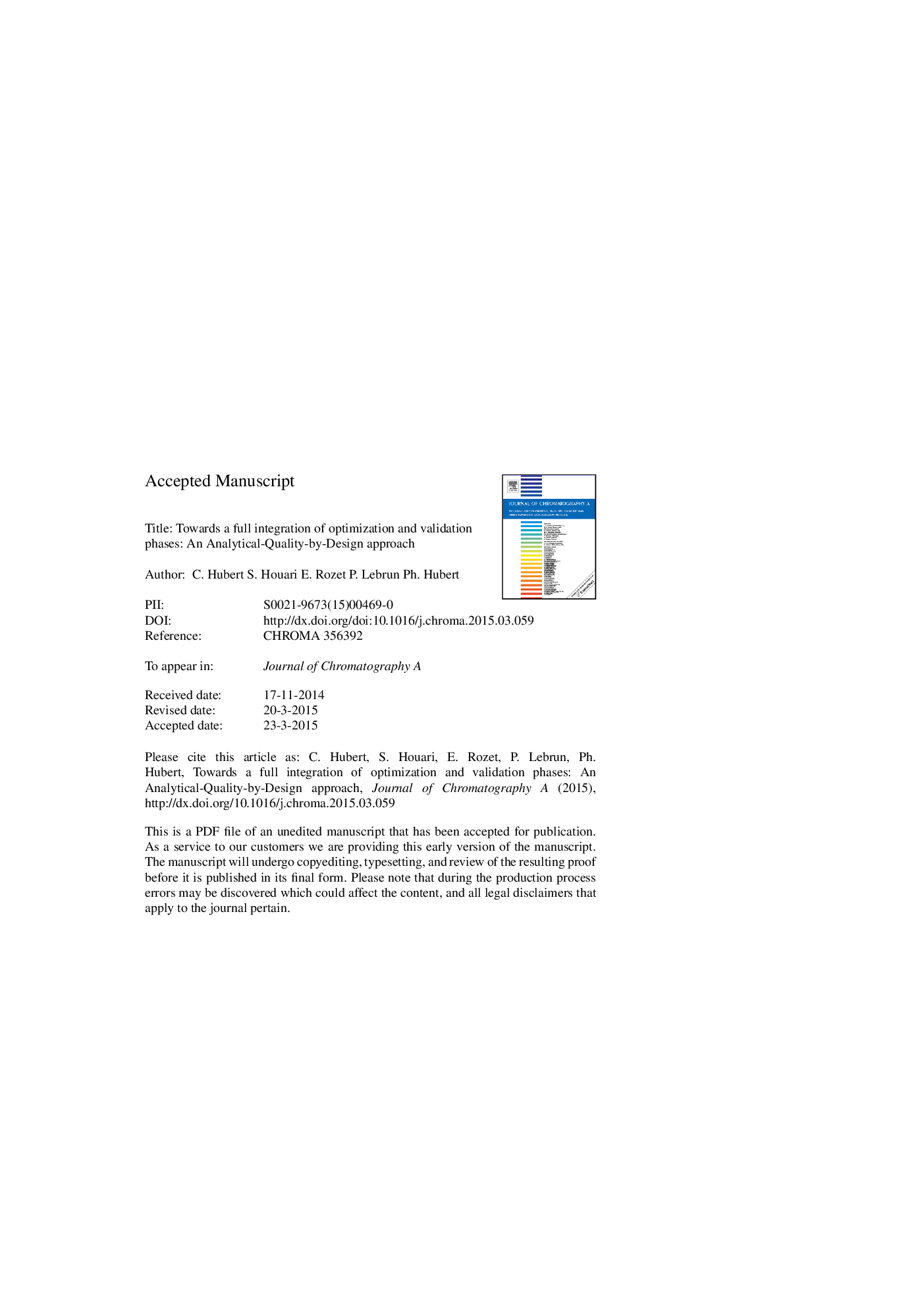| Article ID | Journal | Published Year | Pages | File Type |
|---|---|---|---|---|
| 7611831 | Journal of Chromatography A | 2015 | 49 Pages |
Abstract
When using an analytical method, defining an analytical target profile (ATP) focused on quantitative performance represents a key input, and this will drive the method development process. In this context, two case studies were selected in order to demonstrate the potential of a quality-by-design (QbD) strategy when applied to two specific phases of the method lifecycle: the pre-validation study and the validation step. The first case study focused on the improvement of a liquid chromatography (LC) coupled to mass spectrometry (MS) stability-indicating method by the means of the QbD concept. The design of experiments (DoE) conducted during the optimization step (i.e. determination of the qualitative design space (DS)) was performed a posteriori. Additional experiments were performed in order to simultaneously conduct the pre-validation study to assist in defining the DoE to be conducted during the formal validation step. This predicted protocol was compared to the one used during the formal validation. A second case study based on the LC/MS-MS determination of glucosamine and galactosamine in human plasma was considered in order to illustrate an innovative strategy allowing the QbD methodology to be incorporated during the validation phase. An operational space, defined by the qualitative DS, was considered during the validation process rather than a specific set of working conditions as conventionally performed. Results of all the validation parameters conventionally studied were compared to those obtained with this innovative approach for glucosamine and galactosamine. Using this strategy, qualitative and quantitative information were obtained. Consequently, an analyst using this approach would be able to select with great confidence several working conditions within the operational space rather than a given condition for the routine use of the method. This innovative strategy combines both a learning process and a thorough assessment of the risk involved.
Related Topics
Physical Sciences and Engineering
Chemistry
Analytical Chemistry
Authors
C. Hubert, S. Houari, E. Rozet, P. Lebrun, Ph. Hubert,
